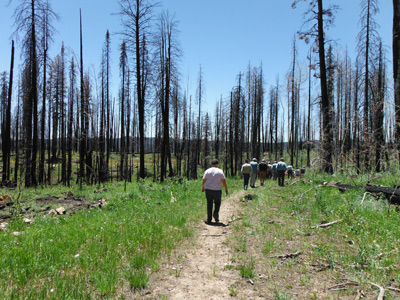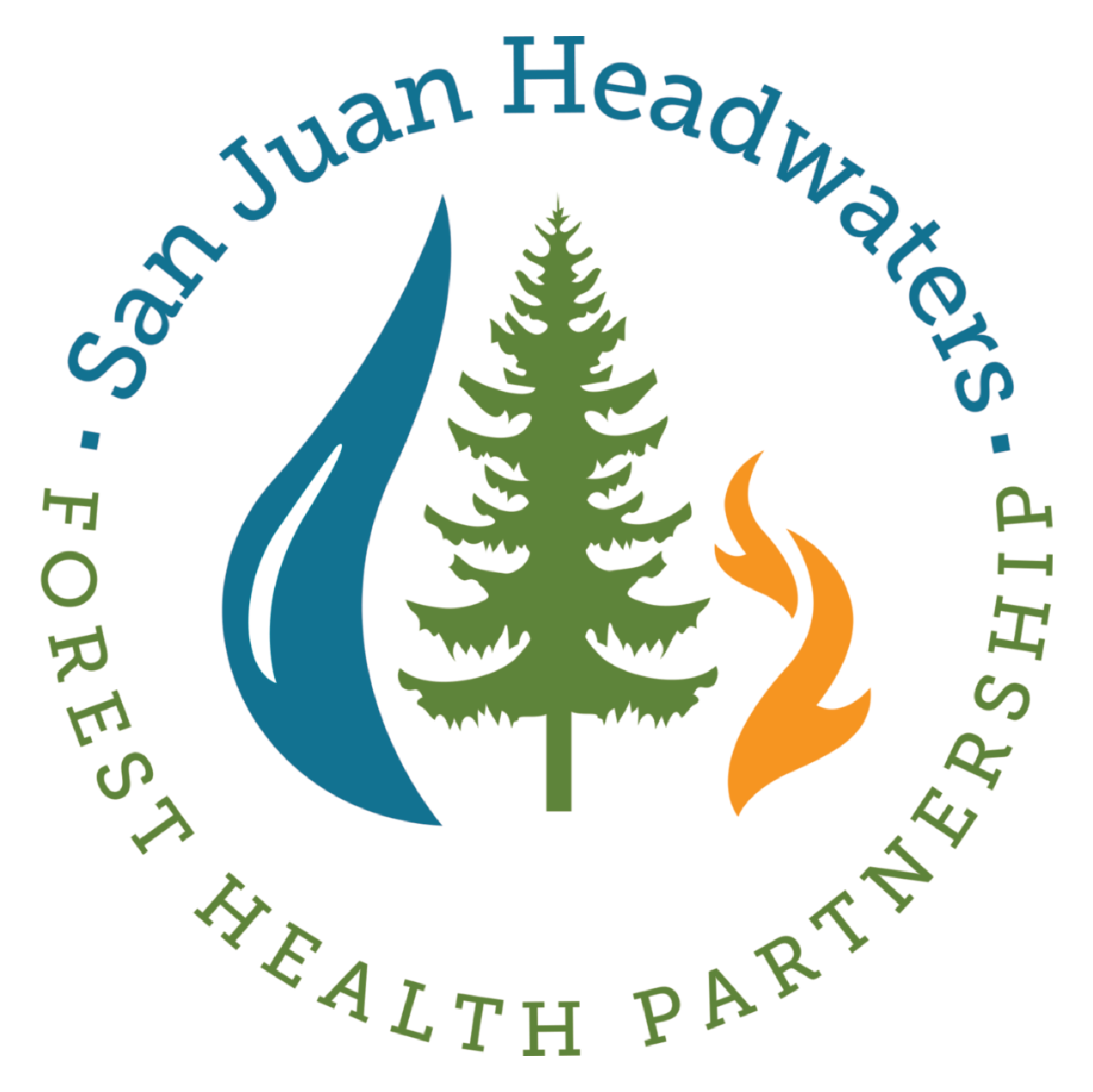Public Invited to Discuss Management of the 2012 Little Sand Fire
 Join San Juan Headwaters Forest Health Partnership (SJHFHP), Firewise Communities of Southwest Colorado (Firewise), San Juan National Forest Pagosa District, Colorado State Forest Service, Southern Rockies Fire Science Network, Colorado Forest Restoration Institute, and Mountain Studies Institute (MSI) for a chance to discuss the management and impacts of the Little Sand Fire and tour the burn area.
Join San Juan Headwaters Forest Health Partnership (SJHFHP), Firewise Communities of Southwest Colorado (Firewise), San Juan National Forest Pagosa District, Colorado State Forest Service, Southern Rockies Fire Science Network, Colorado Forest Restoration Institute, and Mountain Studies Institute (MSI) for a chance to discuss the management and impacts of the Little Sand Fire and tour the burn area.
On June 18, from 9:00 to 4:30, at the Ross Aragon Community Center, there will be presentations and discussions from fire managers, resource specialists, residents, business owners, and others about environmental, social, and economic impacts of the Little Sand Fire.
On June 19, from 8:30 to 4:30, there will be a driving tour of the burn area starting from the Coyote Hill Parking Lot.
This is a FREE event. Please register at our website.
A changing approach to wildfire
Throughout the West, low-severity fires occurred regularly in dry forest types such as ponderosa pine and dry-mixed conifer. The frequency and severity of fires in this region has changed with growing populations and management practices.
“In recent history, there has been a tradition of extinguishing fires quickly. This means that areas that once burned regularly have had long periods of time where they haven’t burned, much longer than would have occurred with natural fire cycles,” stated Steve Hartvigsen, USFS Pagosa Ranger district.
The changes in fire frequency in mixed conifer forests have resulted in changes to forests, making them subject to potentially larger and hotter fires. At higher elevations, fires play in key role in rejuvenating aspen stands. Lack of fire has led to a steady decline in the amount of aspen forests in Colorado.
“Greater time between fires means more materials on the forest floor that can burn, and thicker forests that burn more dramatically,” according to Scott Wagner. “The Forest Service applies a variety of thinning and treatments to forests to help address the changes but we have too much ground to cover and too little time to be an effective alternative to fire. Much of the Pagosa District is in Wilderness or roadless areas where we have few options other than fire for fuels reduction,” stated Wagner. “The Little Sand Fire started in a remote location on steep terrain with numerous snags and it wasn’t safe for firefighters. The decision was made to manage the fire with a confine/contain strategy, which basically means that we take suppression action where there is a high probability of success and less risk to firefighters. We also recognized the need for fire in the ecosystem, but the overriding objective was firefighter safety and protection of private property. In the end there was great benefit to the forest and significant reduction of fuels providing for more options in the future.”
Living with wildfire
Though the flames were located far from residences, there were impacts from the fire.
“We got a lot of complaints about smoke from the fire,” stated Hartvigsen. “There were some who thought that the fire should have been put out so that the smoke would not impact day-to-day lives.”
The impact of smoke is hard to measure but according to Mary Jo Coulehan of the Pagosa Chamber of Commerce, “the chamber got a lot of calls about smoke in the area and how to arrange travel plans.”
“People moving to southwest Colorado are often seeking a sense of remoteness and quiet. As populations grow, they expand further into areas prone to fires. This results in a growing wildland urban interface (WUI) that has to be managed to reduce the threat to lives and property,” stated Bill Trimarco of Archuleta Firewise.
The cost and responsibility for management of the WUI is shared by the USFS (where private properties and forest service lands share boundaries), homeowners associations (HOAs), and private land owners. One group, Firewise is a local organization that helps educate and assist private land owners and HOAs on the best ways to manage their property and reduce the risk of fire damage.
The “Reflections on the Little Sand Fire” event offers the community an opportunity to talk with land managers, citizens and landowners, and regional experts about the Little Sand Fire, management decisions made about the fire, and the social and economical impacts the fire had on the region. Find more information at the Mountain Studies website. You can also contact Aaron Kimple at akimple@mountainstudies.org or (970)382-6908.
“Reflections of the Little Sand Fire”, June 18-19, 2013. Open and Free to the Public. Space is limited. Please register for the event here.
Original published in the Pagosa Daily Post
